After 11 games of the 2024/25 La Liga season, FC Barcelona sit top of the table, six points clear of second-place defending champions Real Madrid.
It’s been a highly impressive start to life in the Barca dugout for ex-FC Bayern and Germany manager Hansi Flick, whose win percentage now stands at 85.71% after 14 games (12 wins and two losses), following this past weekend’s resounding 4-0 victory over arch-rivals Los Blancos at the Santiago Bernabéu.
This tactical analysis will detail three of Barcelona’s winning tactics from Saturday’s marquee fixture.
Barcelona Offside Trap: Tactical Analysis
Since taking over, Hansi Flick’s coaching style at Barcelona has arguably instilled the best offside trap in Europe.
As their respective defensive territory maps in Figure 1 indicate, both Real Madrid and Barcelona defended with quite a high defensive line in Saturday’s game.
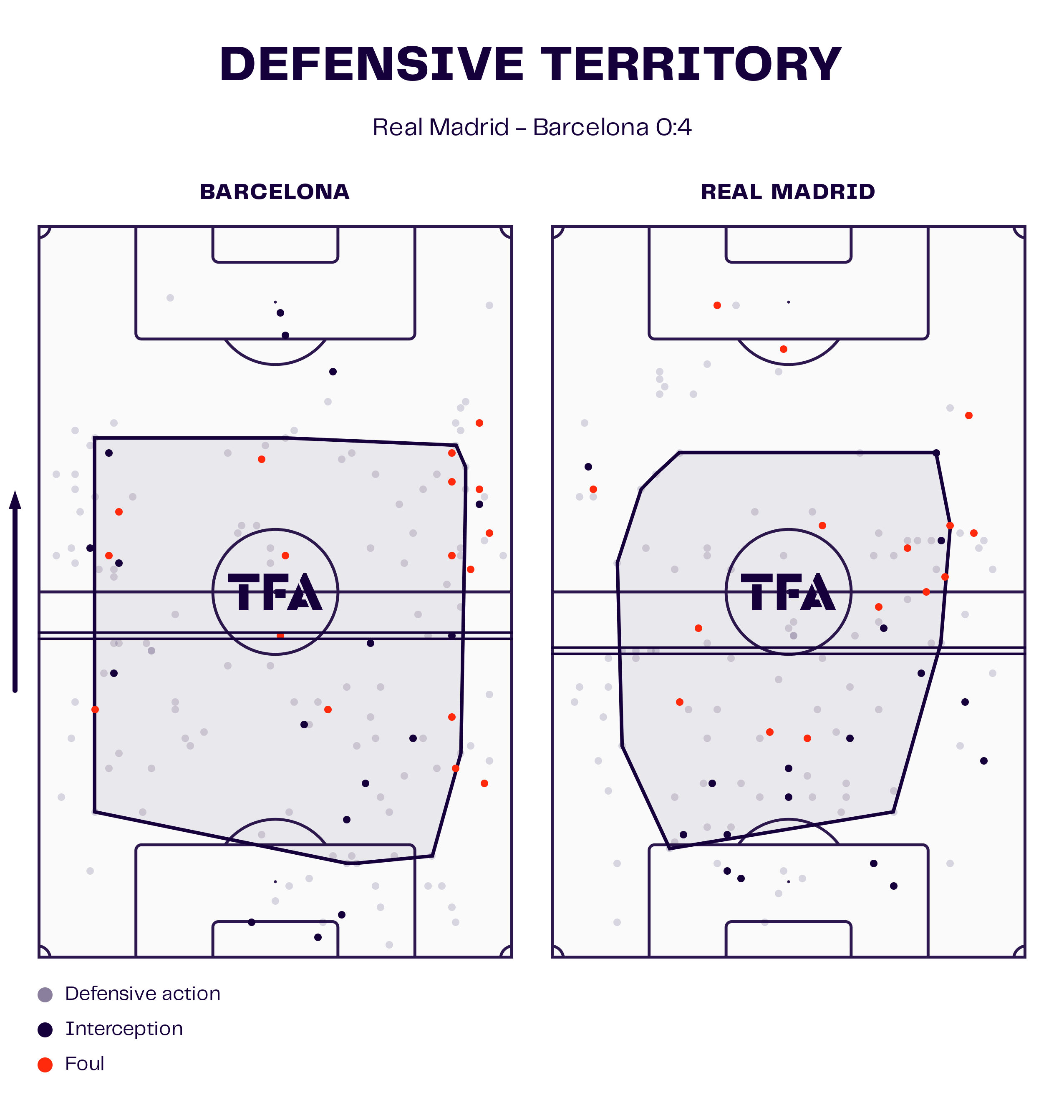
However, Barcelona caught Real Madrid offside a whopping 12 times throughout Saturday’s game — eight of which saw Kylian Mbappé fall victim to Barca’s ultra-effective offside trap.
On the flip side, the hosts only managed to catch Barca offside once in the entire game, drawing a stark contrast between the pair’s defensive approaches.
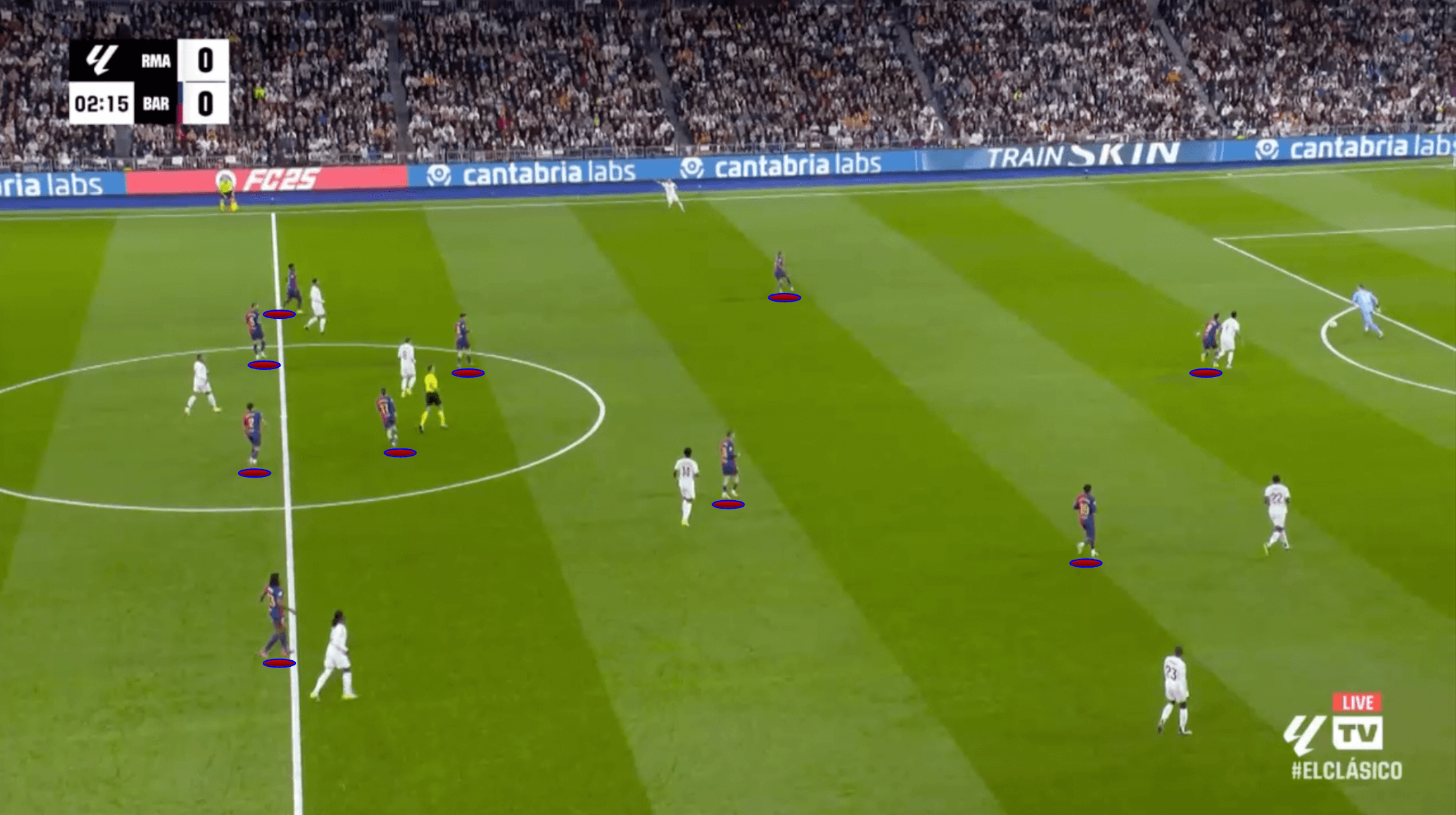
Under Hansi Flick tactics, Barca’s backline pushed aggressively high up the pitch, pushing the midfield and attack forward, creating a high press against Real Madrid’s build-up play.
We’ve seen a similar approach from Hansi Flick’s style of play all season, including Barcelona’s 4-1 win over FC Bayern in the Champions League last week.
As we discussed in our post-match analysis from that game, Barca’s backline aggressively positioned themselves in a space-oriented manner.
The double pivot held their position just in front, closing off space between the lines, while the ‘10’ kept relatively close to the deeper midfield duo, covering the space between them and the pressing forwards/wingers; this is also on display in Figure 2.
Bayern sometimes succeeded in playing through Barca by overloading the half-spaces with players dropping in or advancing from deep to occupy those areas of the pitch.
The Bavarian giants also succeeded in breaking down Barca’s defence by using the pitch’s width and switching play via long passes from one side to the other.
In Figure 2, Real are certainly not overloading the half-spaces, nor are they really looking to exploit the width, with players generally either positioned deep or high.
Madrid’s plan was essentially to play over Barca’s press rather than through it — a fine plan if it works, but they constantly failed to match the playing of the pass to the timing of the run.
This miscommunication resulted in a lot of frustration for Carlo Ancelotti’s side.
At the same time, Barca remained calm and organised, protecting the middle of the park with their high, space-oriented press and protecting the space behind with an effective offside trap.
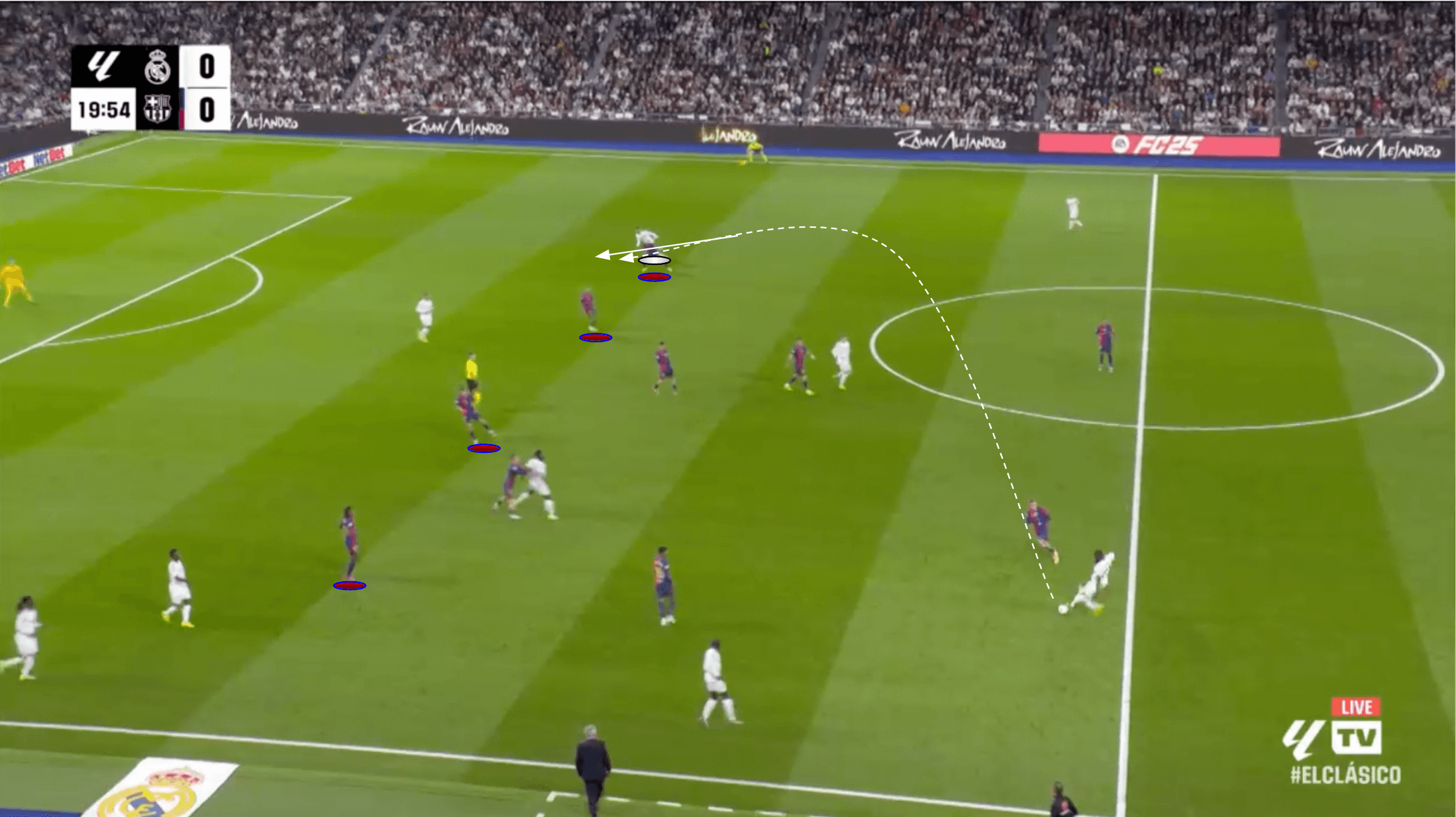
Figure 3 shows an example of Jude Bellingham trying to exploit the space behind Barca’s backline with a run from midfield.
Barca’s defensive line held firm, remained high, trusted in their cohesion and succeeded in catching the Englishman offside.
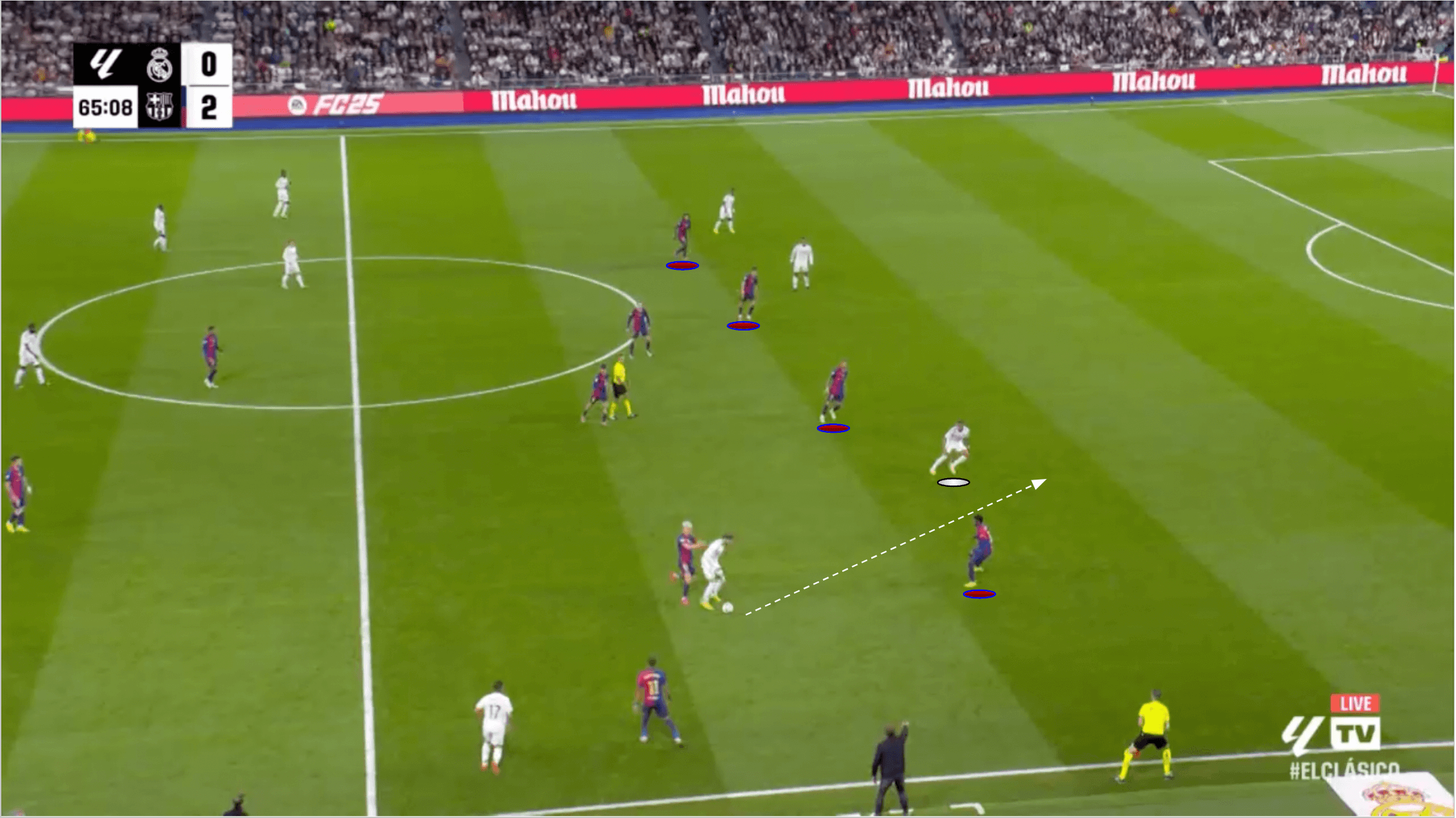
Later in the game, we saw Mbappé being caught offside by the bravery of Barca’s backline.
They held strong, remained high, and, crucially, were in line with one another to ensure the French attacker would not succeed in getting onto the end of this through pass, which could’ve been critical had the forward been more patient in making his run.
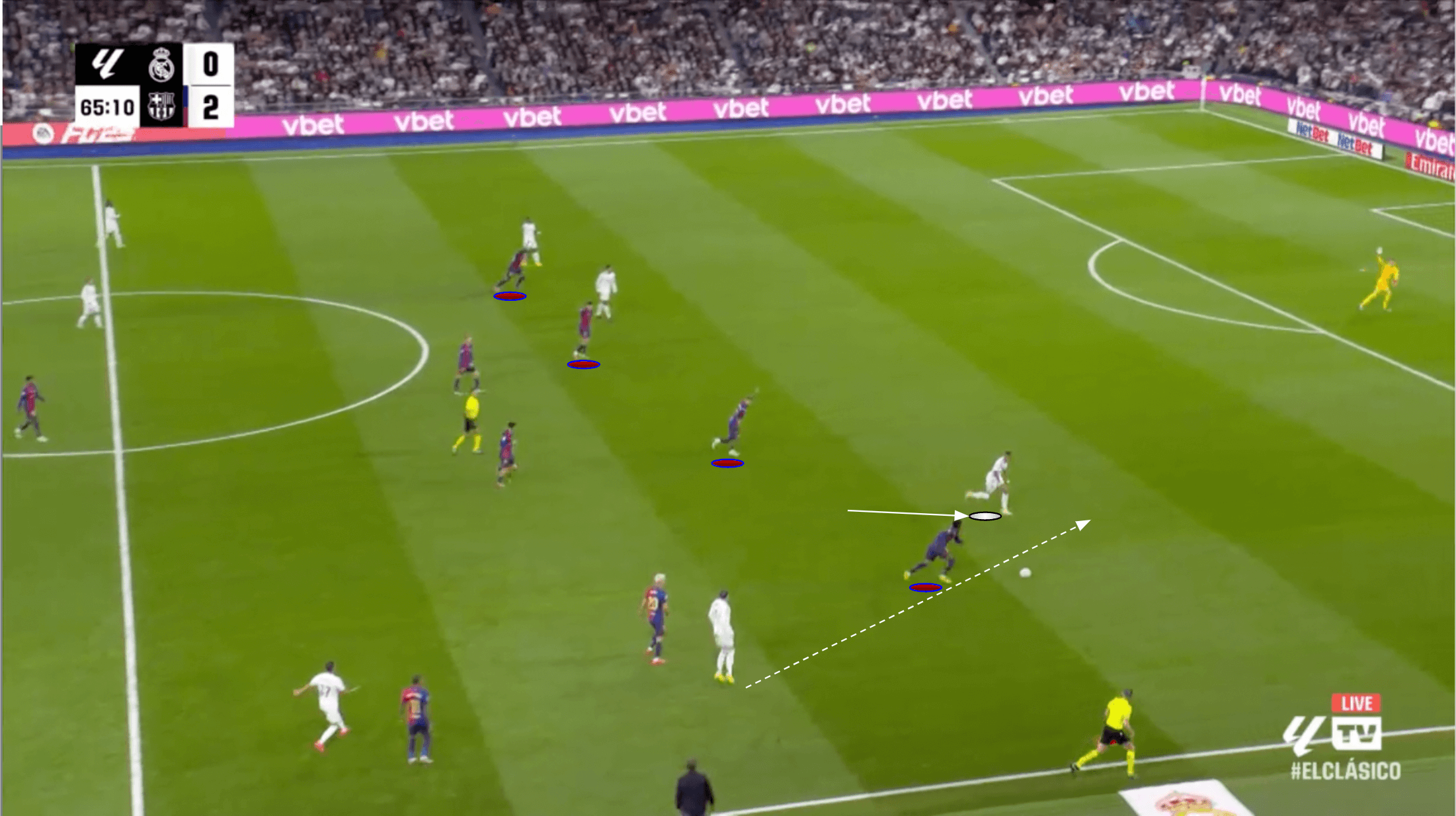
As the play moves on, the pass is sent to Mbappé, and Barca’s defenders immediately raise their hands in sync, correctly calling for the offside.
A combination of questionable strategy, Barcelona’s well-drilled defensive tactics, along with poor timing and cohesion from Madrid in attack killed a lot of Los Blancos’ attacks on Saturday — a defensive masterclass in how to deploy the offside trap from Flick and co effectively.
Robert Lewandowski’s Masterful Centre-Forward Play
The man responsible for Barcelona’s only offside in the game, Robert Lewandowski, was also responsible for scoring the Catalans’ opening two goals.
He played a significant role in creating the third, so he can be forgiven for that minor misstep of getting caught offsides.
Robert Lewandowski Touch Map
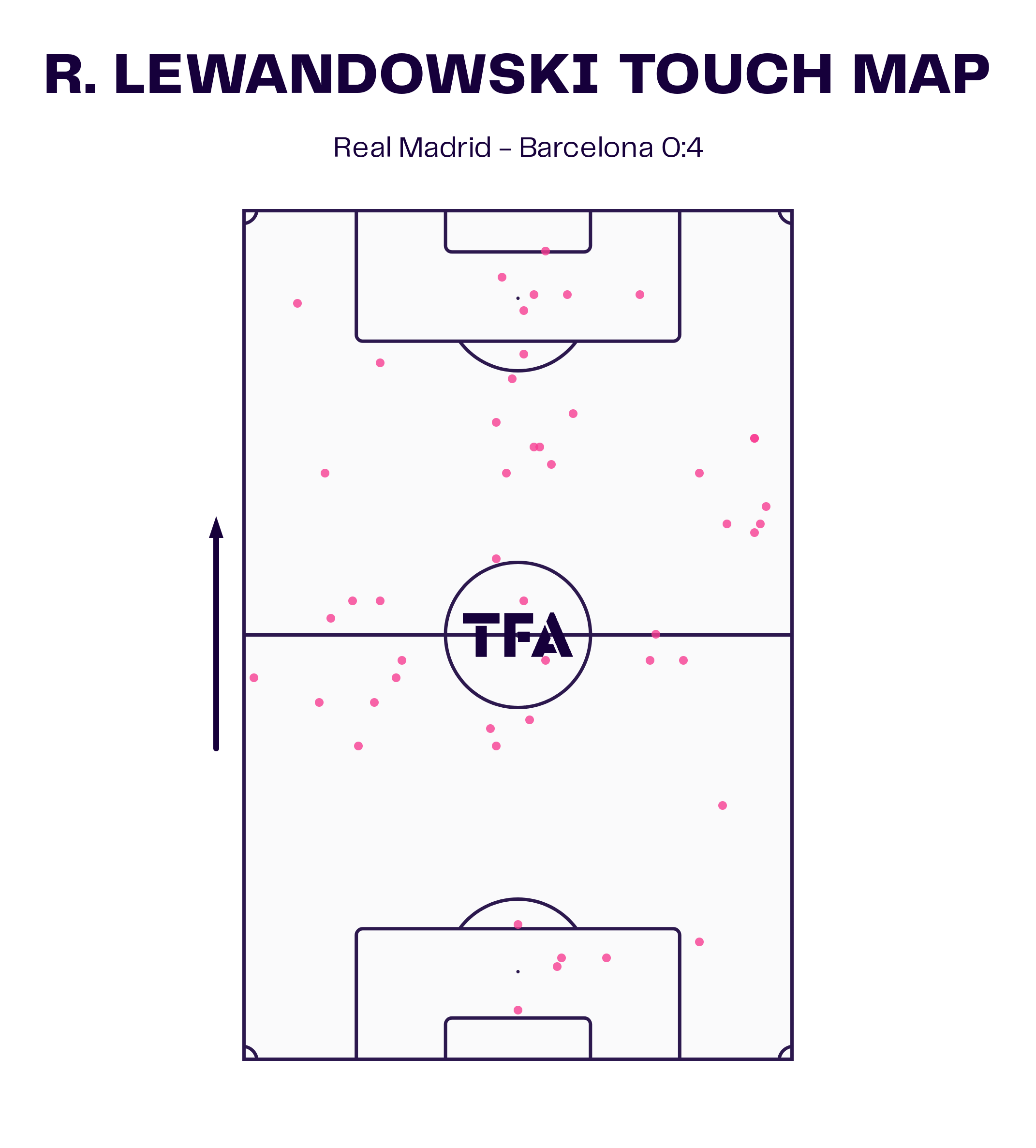
Looking at Lewandowski’s touch map from the game, we can see he got around the pitch a fair bit, including sometimes dropping off from the backline slightly; this was a significant aspect of his game, which continuously helped his side to create chances on Saturday.
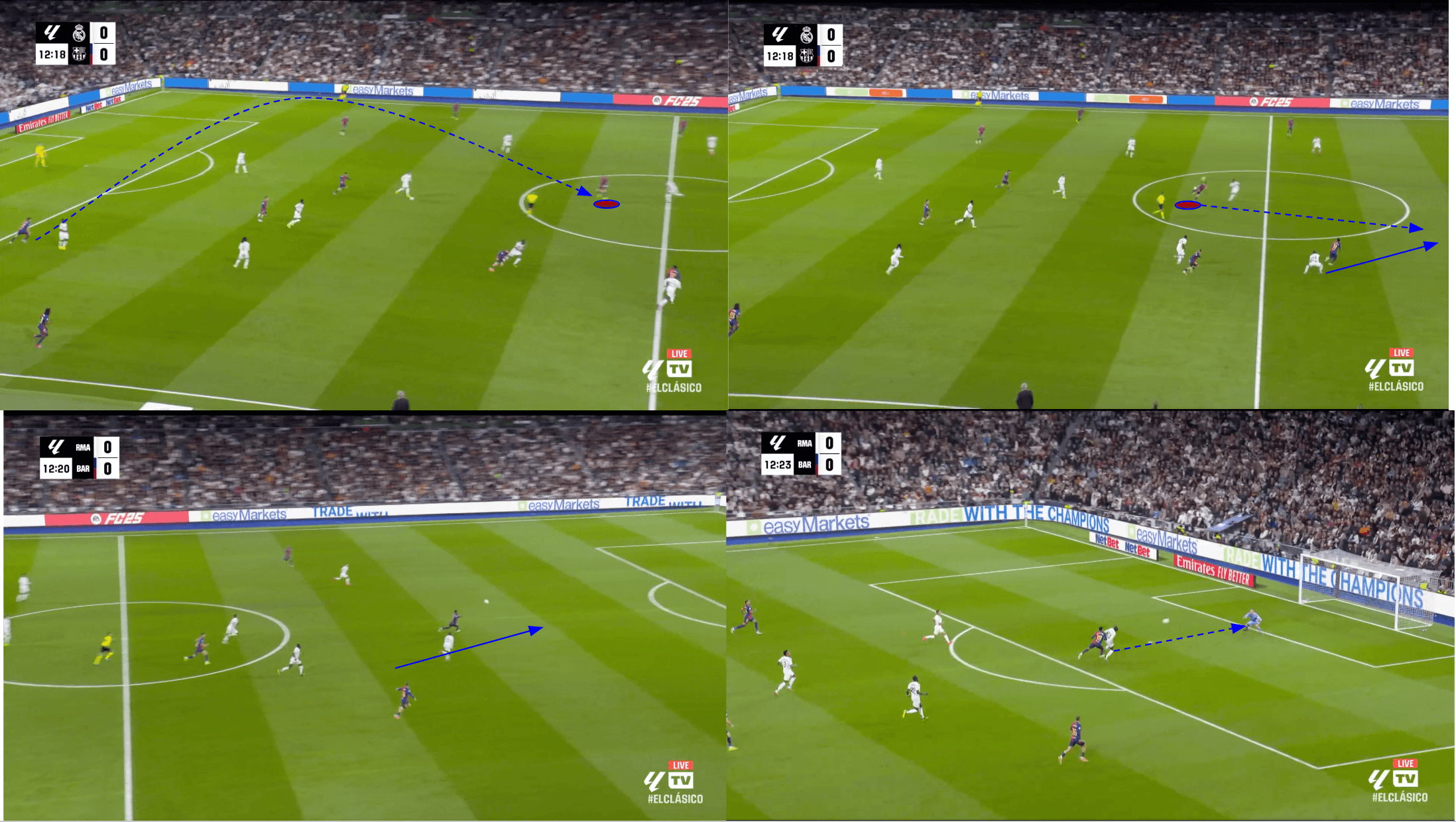
Take Figure 7, for example, where we can see Barca targeting Lewandowski via a long ball from the back after the Polish forward has dropped off from the Madrid backline into some space between them and the midfield.
Lewandowski impressively plays the ball through first-time into the space that he’s opened up in Madrid’s backline by dragging the centre-back with him as he dropped, setting up Lamine Yamal — inverting from the right-wing — for a decent goalscoring chance, which Andriy Lunin ultimately saves.
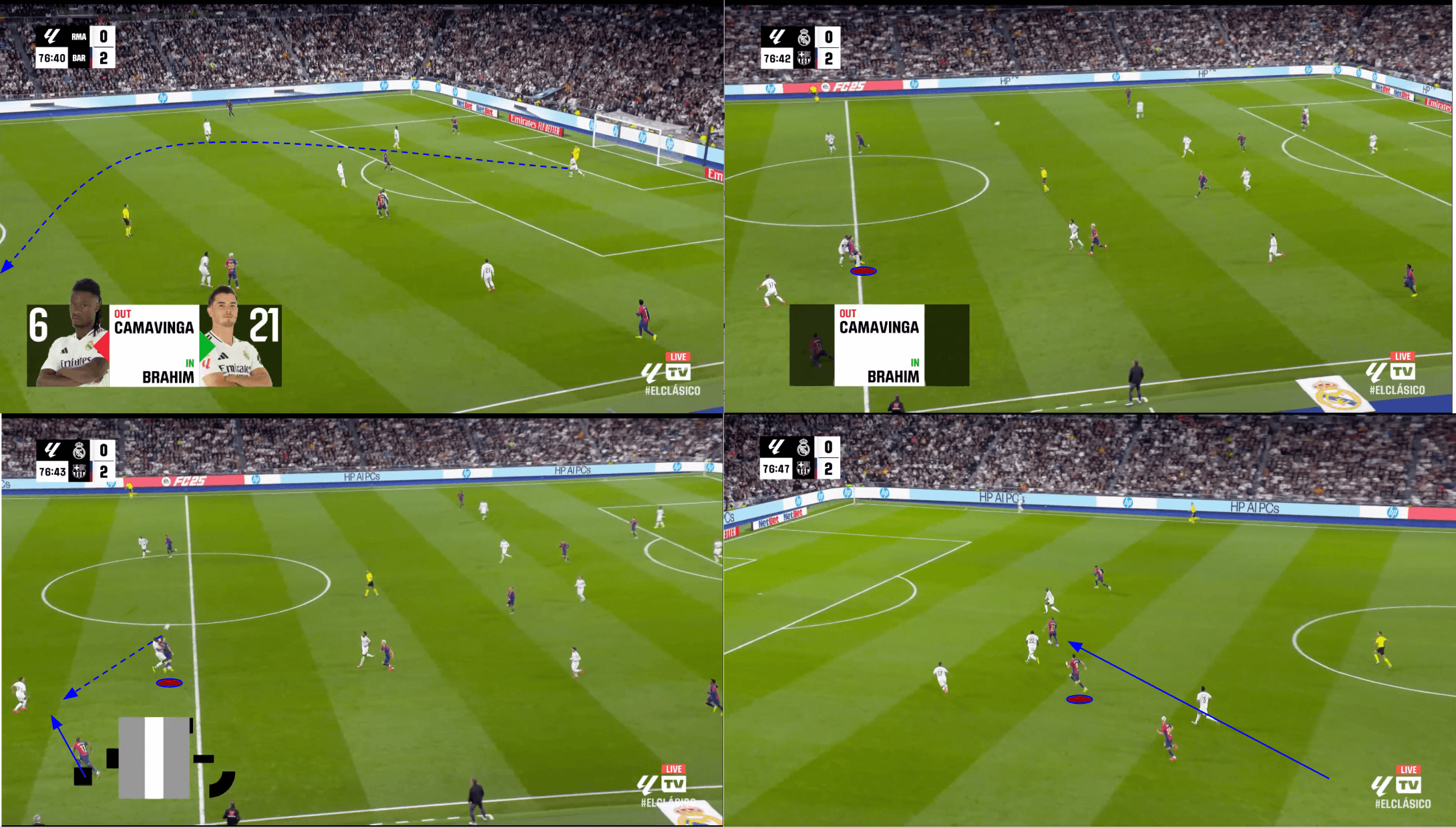
In the 79th minute, Barca targeted Lewandowski with a long ball from the back, as we can see in the top-left image of Figure 8.
Moving to the top-right image, we see the forward set himself, backing into the defender behind him, preparing to knock the ball on for Raphinha behind him.
As the play moves on, we see Raphinha carry the ball forward and play it through for Yamal to blast it into the roof of the net, putting the Catalans three goals up — a great example of how Barcelona were able to mix things up and successfully attack directly through the intelligent use of Lewandowski and his incredibly well-rounded centre-forward skill set.
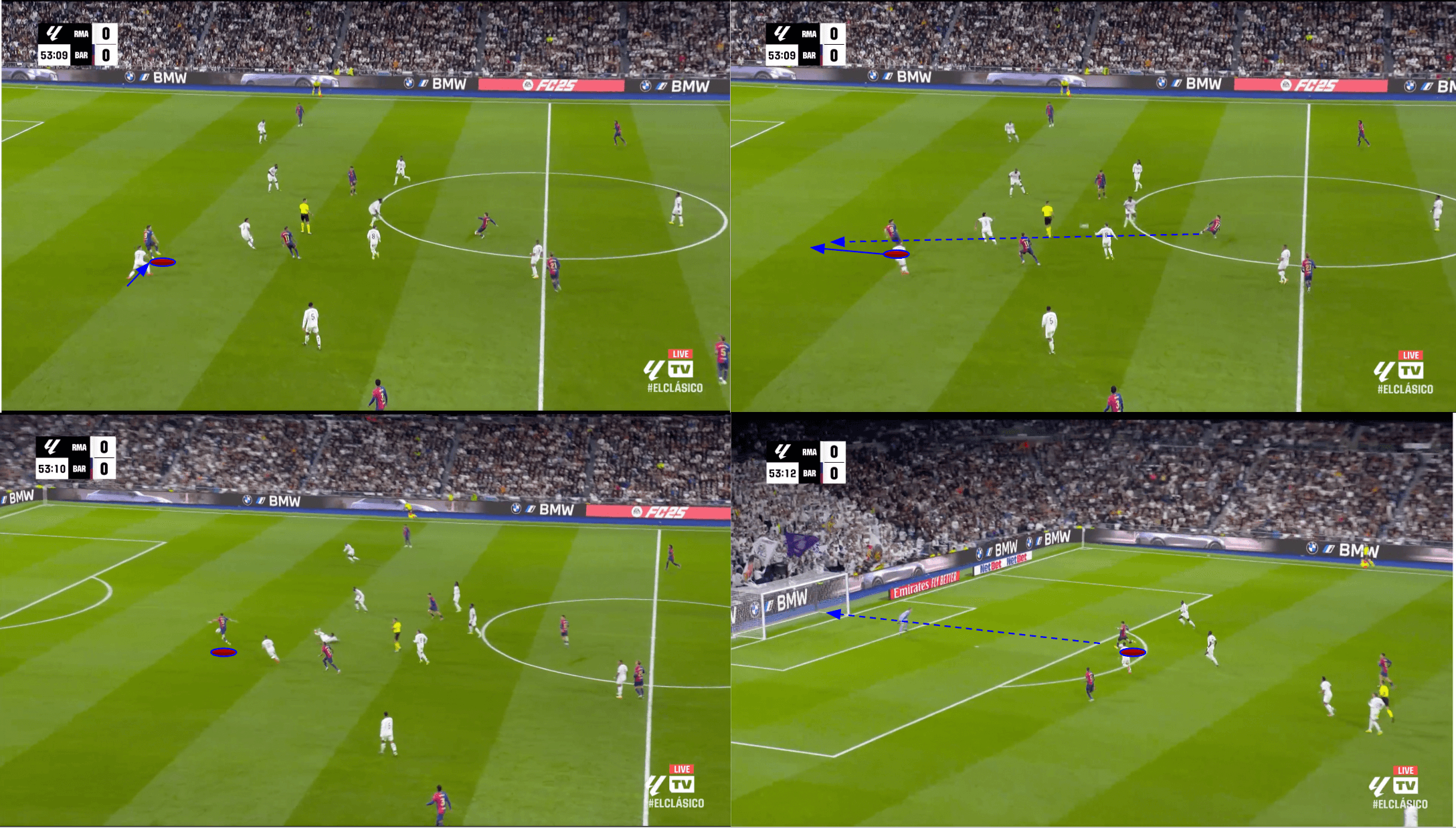
Though he did get played offside once, Lewandowski did a much better job of timing his run to stay onside than any of Madrid’s attackers did in Saturday’s game.
Figure 9 demonstrates how this skill of his was crucial in opening the scoring for Barca in the 54th minute.
In the top-left image, we see the forward moving horizontally across the pitch but not changing his vertical positioning at all.
By doing so, he can clearly see he’s level with the Madrid full-back Ferland Mendy playing him onside.
He can maintain some momentum via his movement without worrying about straying offside.
As the pass is played, Lewandowski can now use that momentum and propel himself in behind the backline to gain an extra few yards on the defenders.
He takes the ball into his stride in one touch before finishing what is not necessarily an easy chance with incredible composure with the inside of his right boot, curling it around the Madrid stopper at the near post in cold-blooded fashion — giving a lesson in how to time your run in behind to all young forwards watching.
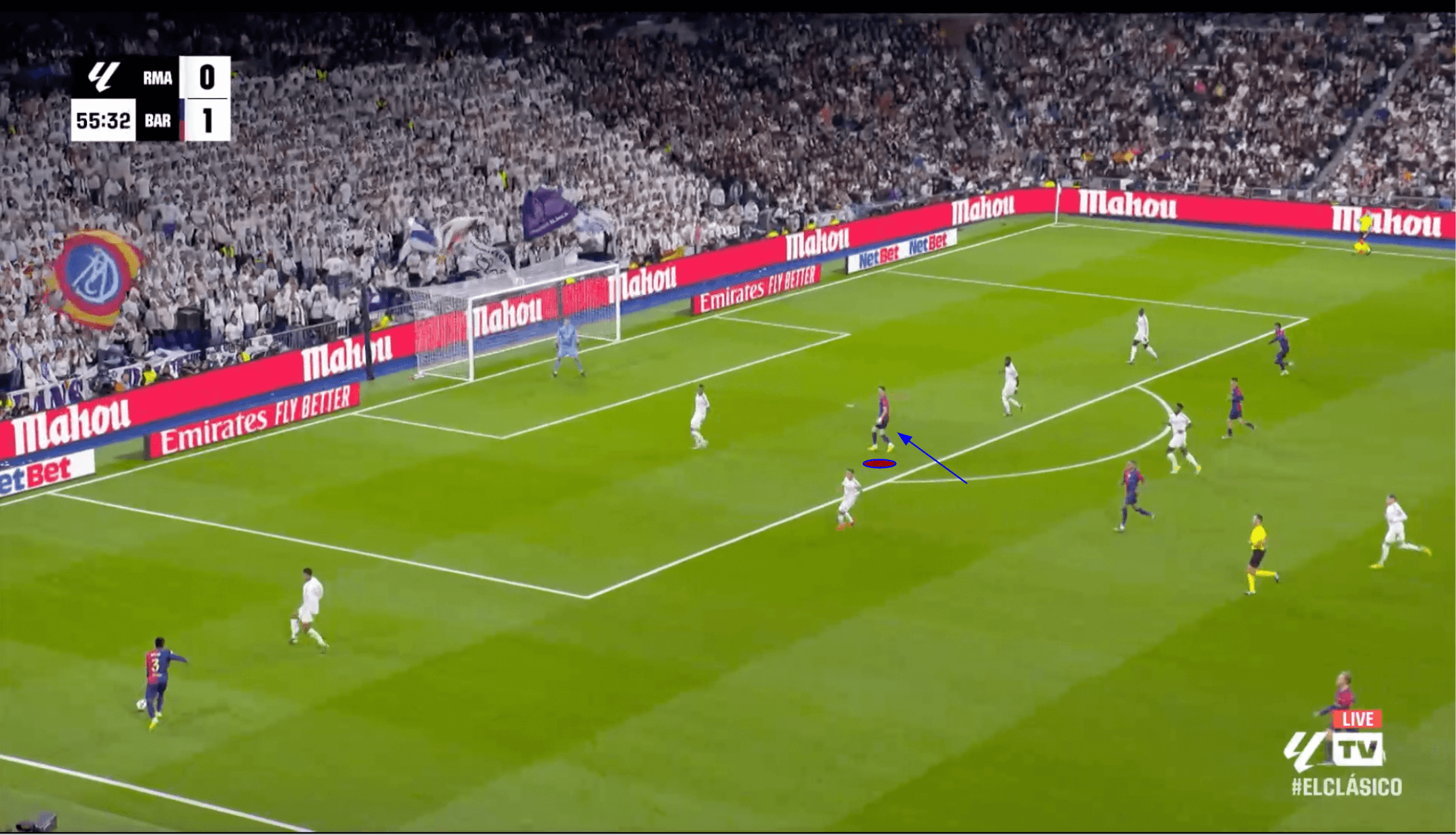
Throughout the game—especially in the second half—Lewandowski moved very intelligently between Madrid’s centre-backs, taking advantage of the vast space they allowed between them.
Neither defender really picked the Polish forward up.
Lewandowski had a few excellent chances from inside the box as a result of these runs between the centre-backs and into prime goalscoring territory, smack bang in the middle of the box; one of these opportunities resulted in goal number two for Barcelona.
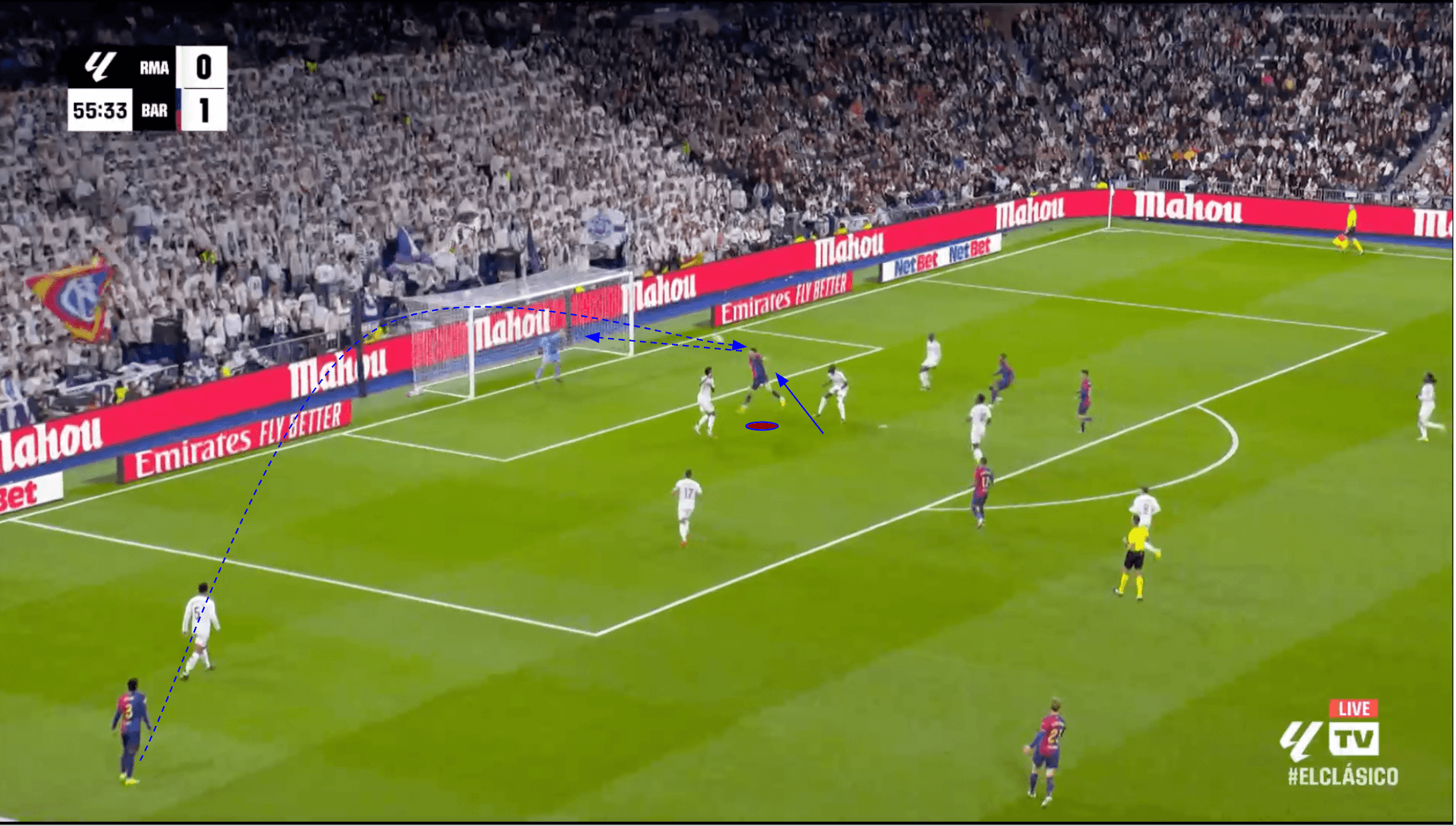
As the play moves on from Figure 10, Lewandowski remains free and in space as Alejandro Balde’s cross comes in and lands perfectly on his head.
The 36-year-old is able to direct the ball to the far corner of the net with a free header to double Barca’s lead in the 56th minute.
Lewandowski’s well-rounded performance as a centre-forward showed why he’s so valuable to his team.
He gave them plenty of different options from the number 9 position, made chances for others, and offered his team’s creators a great passing option throughout the contest, which was pivotal in Barca’s goalscoring.
Frenkie de Jong’s Role In Controlling The Game
Frenkie de Jong has only recently returned from an ankle injury and is yet to start a game this season.
However, he came on at half-time versus Real Madrid and played his first 45 minutes of the campaign, looking completely at home in the heart of Barcelona’s midfield formation for the second half.
De Jong helped his team control the game even more than they did in the first half from his introduction in the second — not an easy feat at the Bernabéu!
He completed the fifth-most passes (36) of any Barca player despite only playing half the match and finished the game with the best pass accuracy (97%) of any member of his team—not a bad showing for a player making his first 45-minute appearance of the season away at Real Madrid.
Frenkie de Jong Pass Map
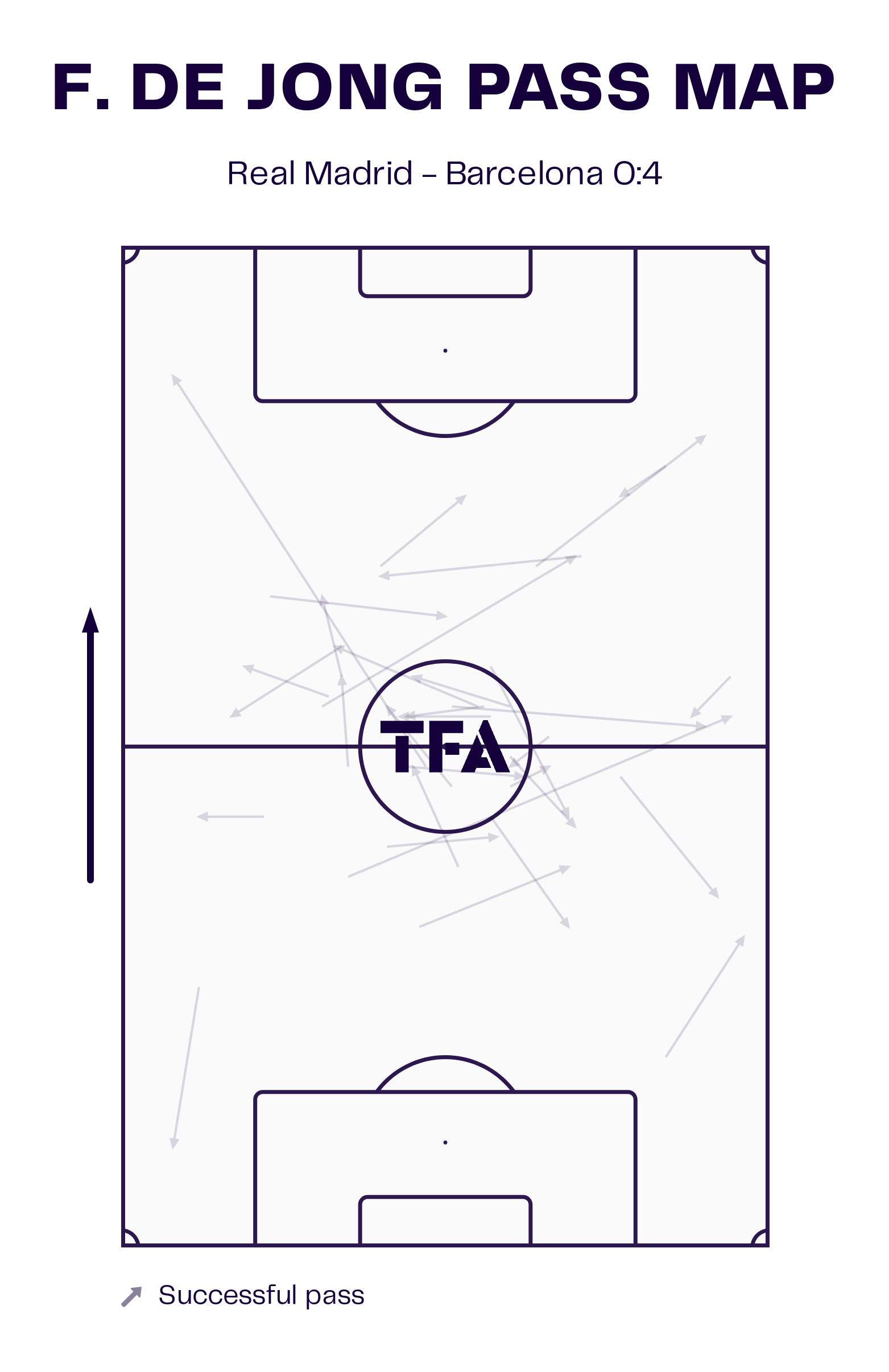
De Jong slotted straight into the centre for Hansi Flick’s Barcelona formation, typically occupying the right side of the double-pivot without the ball and moving more centrally when in possession.
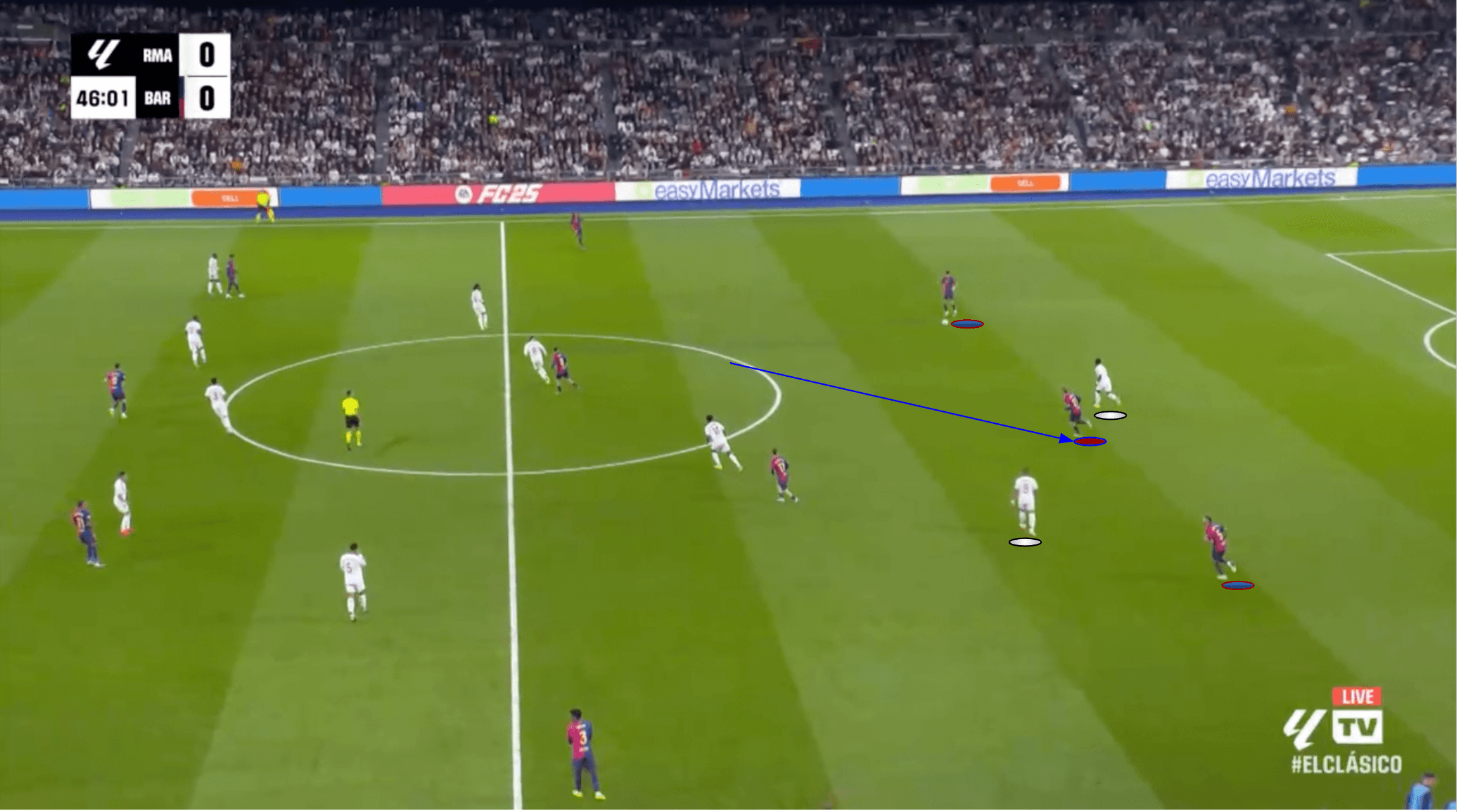
During the build-up, a key part of De Jong’s role was dropping in between the centre-backs, creating a temporary back-three and giving Barcelona a +1 numerical advantage versus Real Madrid’s centre-forwards.
This helped them break down Real Madrid formation and play past them into midfield more comfortably.
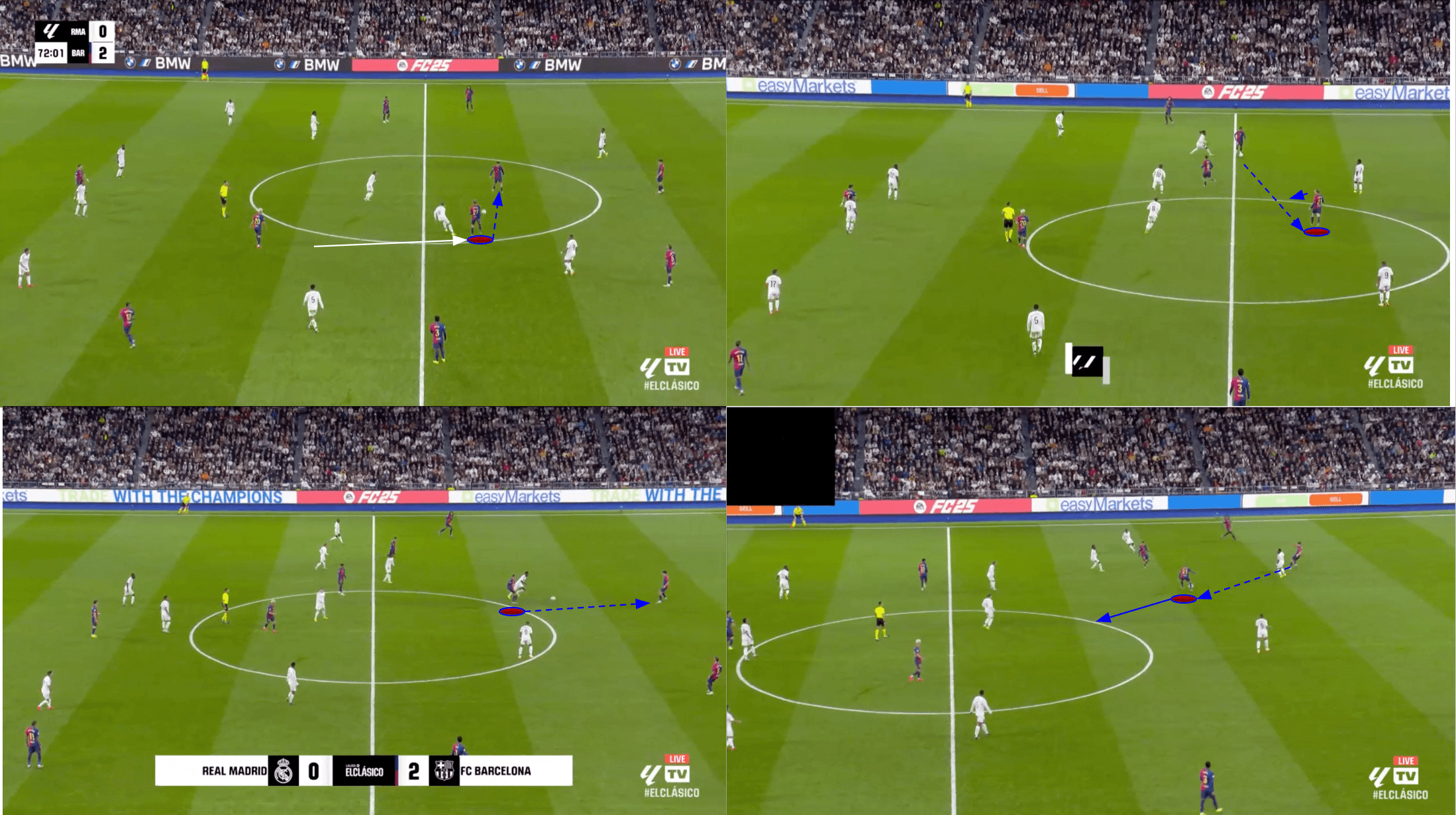
The central areas of the pitch are more valuable for chance creation than wider areas.
De Jong’s patient possession play versus Real Madrid helped his side find space centrally and manage to progress the ball through the middle of the park even if it didn’t appear immediately.
In Figure 14, the Dutch midfielder is forced laterally when pressed on initially receiving before eventually being forced backwards the next time he receives.
However, De Jong and Barca don’t give up.
Soon after playing the ball backwards, De Jong is able to drop and create space behind him to turn into so he can carry the ball forward and now be in a position to pass the ball forward from a valuable central position—especially for a player with his passing range and ability.
This provides a great example of what De Jong added to his team in the second half in terms of ball progression, with his passing and intelligent movement to find space in the middle of the park.
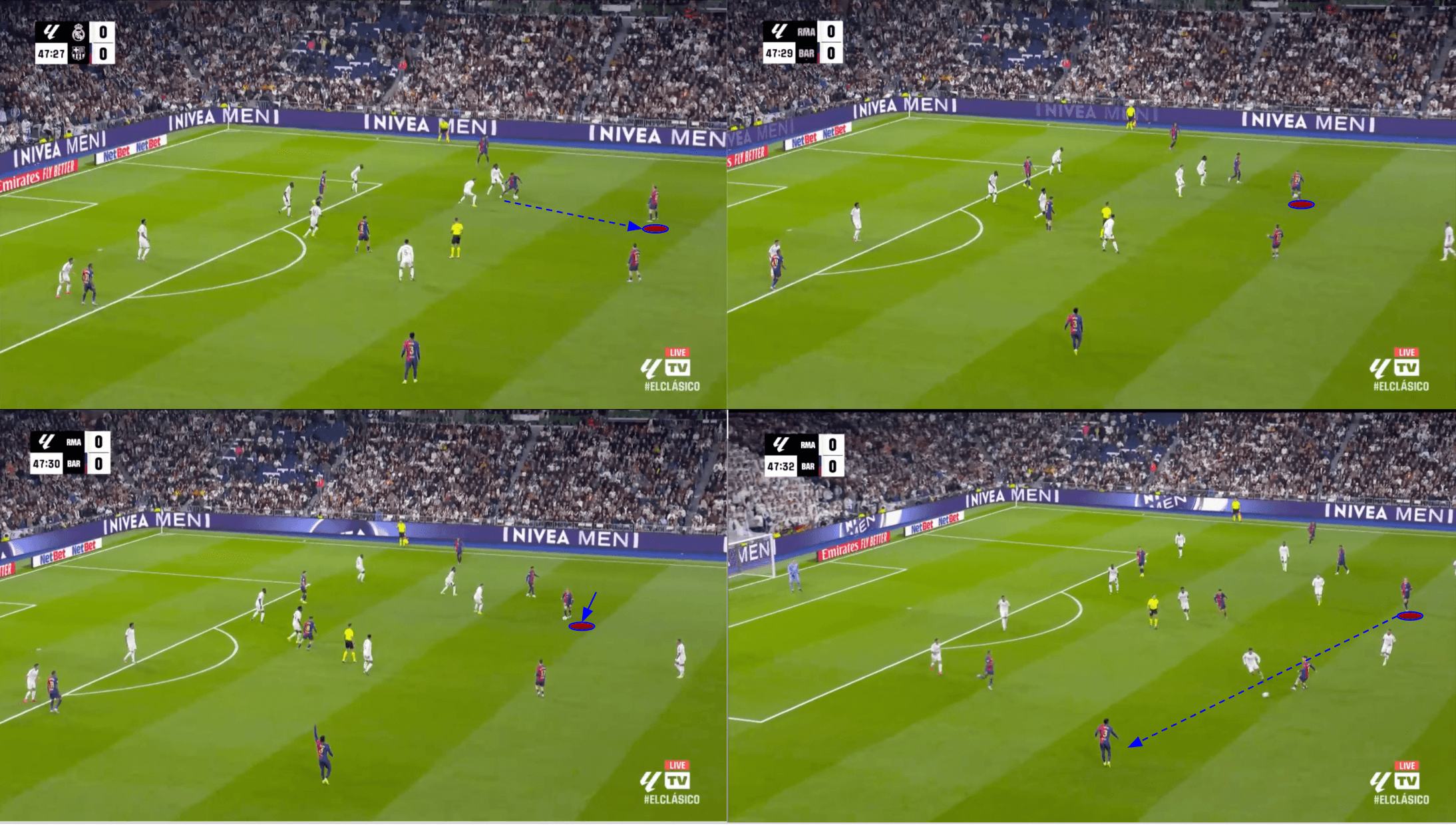
De Jong constantly moved to position himself in advantageous positions for his teammates to find him if needed.
This included giving attackers a safe, slightly deeper outlet if they found themselves unable to continue forward, as was the case in the top-left image of Figure 15.
As the play progresses, De Jong showcases his agility by turning on a dime before switching the play over to the opposite wing and into space.
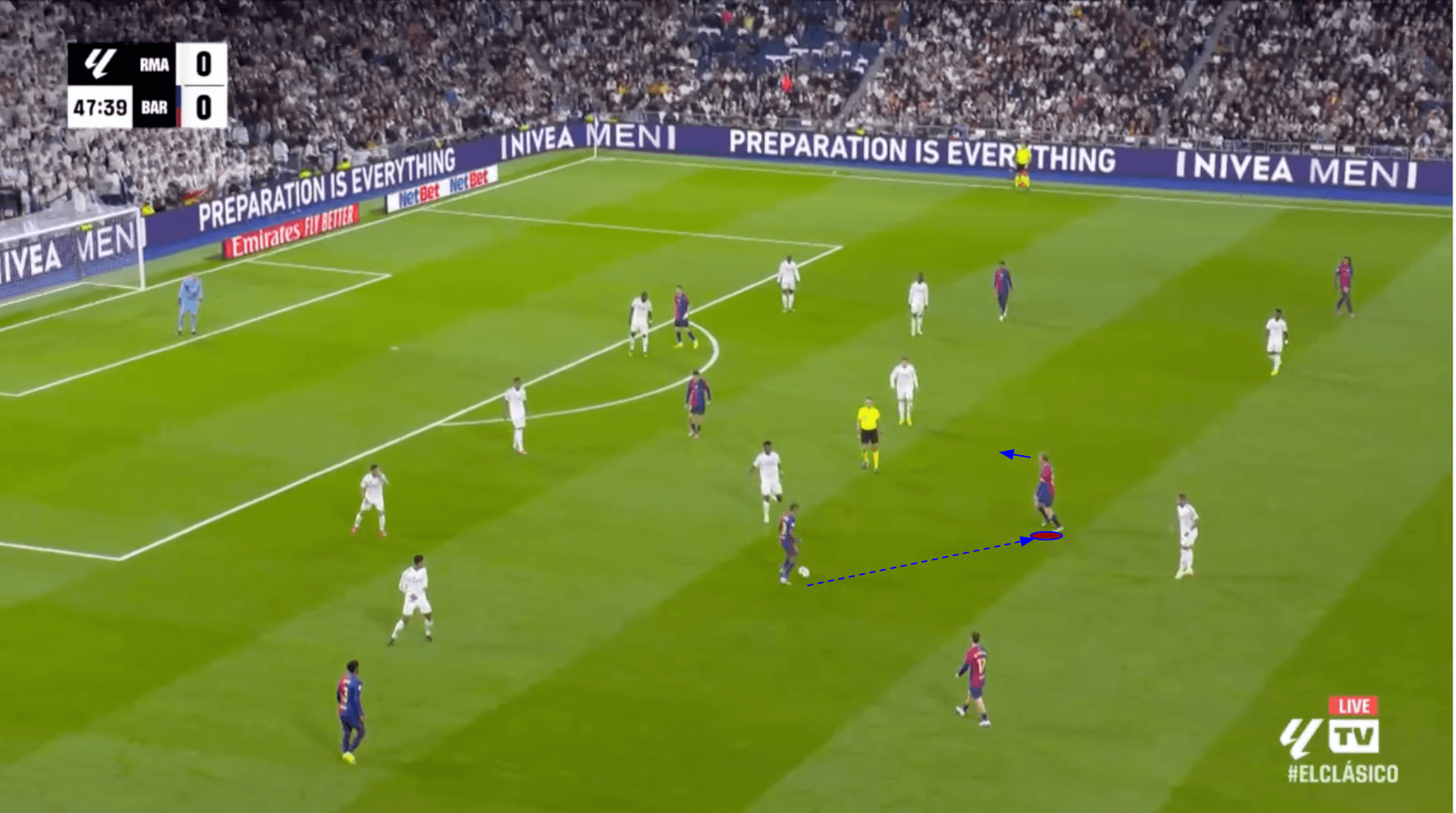
As the play progresses, De Jong plays a vital role in the next steps of this attack.
He goes on to become a passing option on the left now, receiving after scanning to spot an excellent forward passing option in the final third.
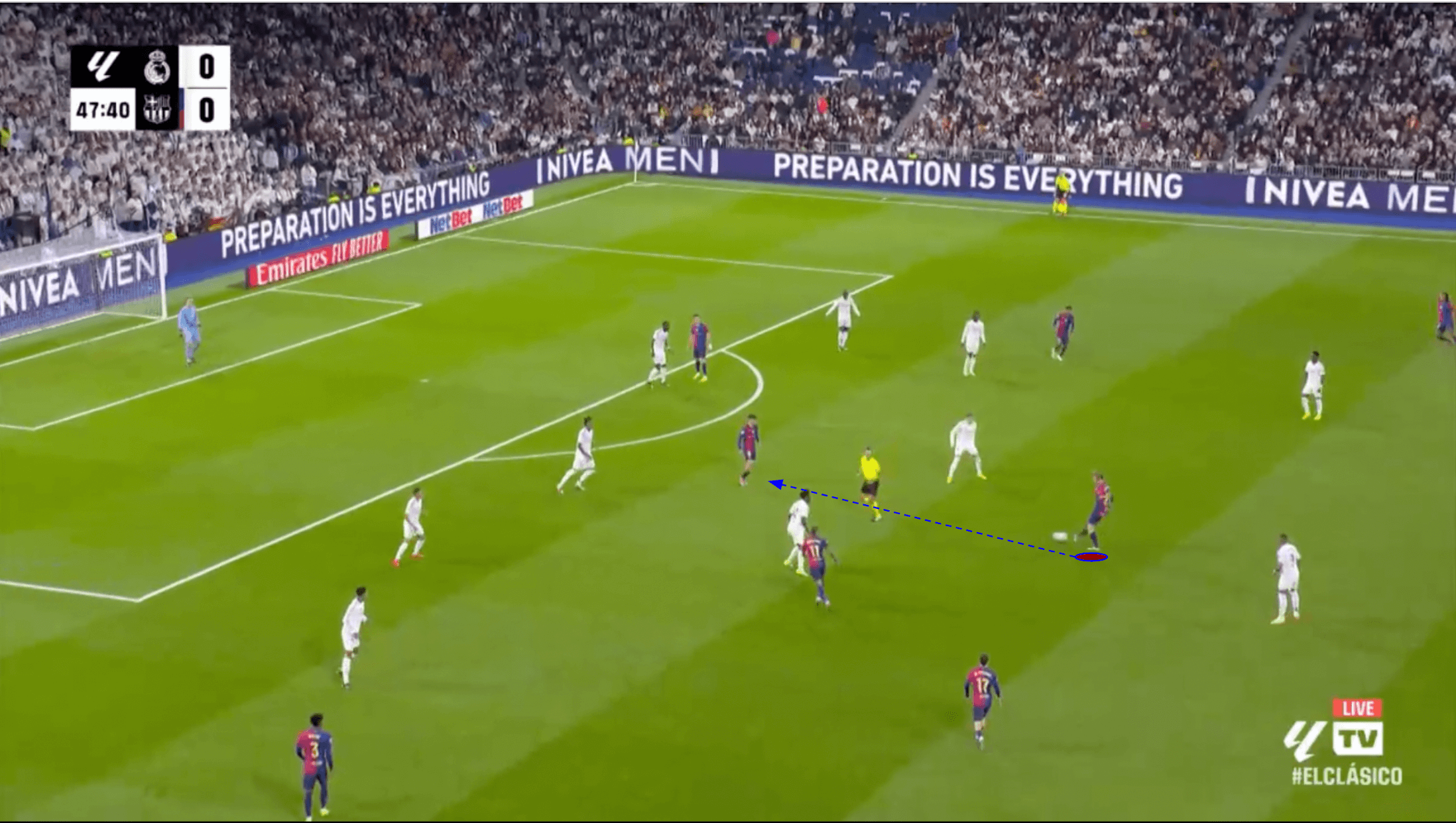
His scan gave De Jong the positional awareness to quickly act on receiving the next pass.
He receives and immediately plays the ball towards a free man in the final third, helping improve Barca’s threat level and getting his team closer to threatening Real Madrid’s goal.
This section highlights how De Jong was heavily involved in all phases of possession play after his introduction on Saturday; he helped Barca build play more comfortably, progress more often through the middle of the park and advance into the final third to create chances.
Overall, he was instrumental in Barcelona’s control of the game in the second half, making him a wise sub for Flick.
Conclusion
At the end of this El Clásico, it was clear Hansi Flick’s style of play completely outclassed Carlo Ancolatti’s tactics on Saturday.
Barcelona’s offside trap and defensive tactics killed Madrid’s attacks on numerous occasions.
In possession, Lewandowski’s centre-forward play was crucial to Barca’s success, as described above.
At the same time, De Jong’s second-half appearance helped consolidate the Catalan side’s control of the centre, ensuring their victory at the Bernabéu.
It will be interesting to see what tactical adjustment Carlo Ancollati’s side makes for their next meeting, but overall, Hansi Flick has had an excellent start at Barcelona.

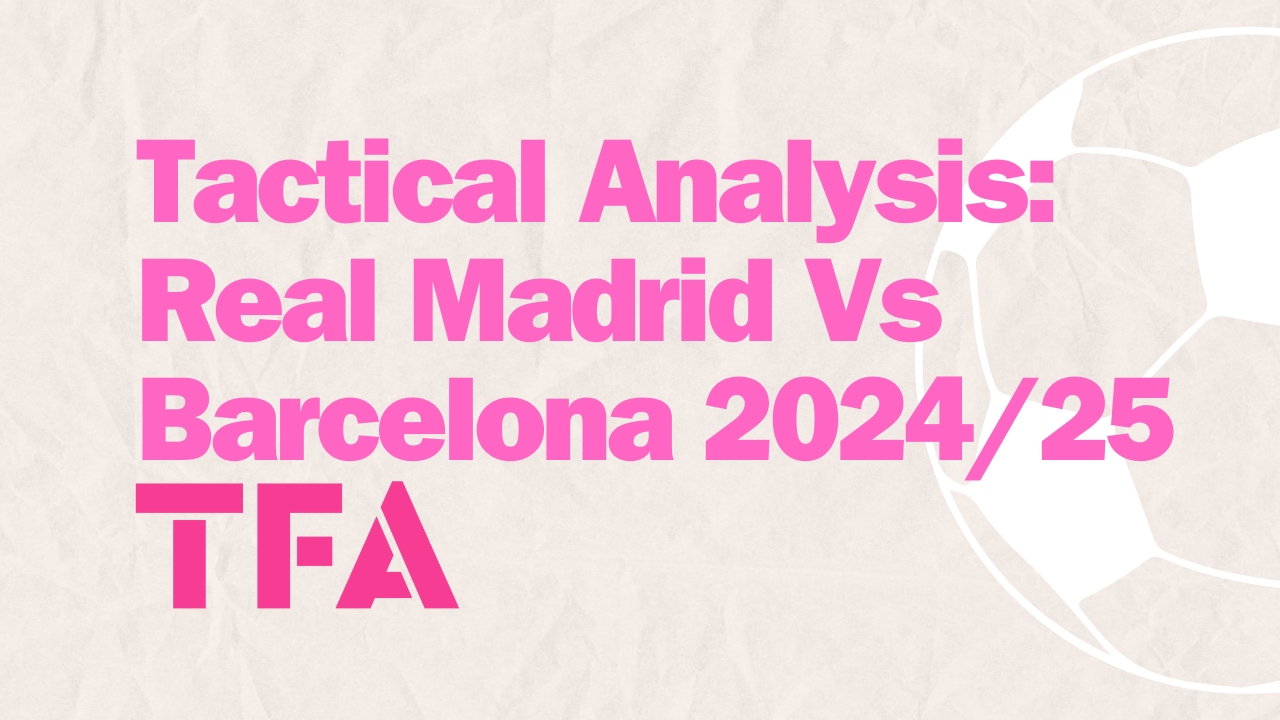



Comments